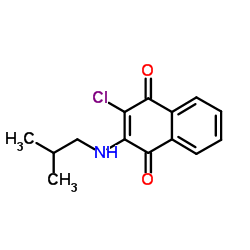Lifetime regulation of the charge-separated state in DNA by modulating the oxidation potential of guanine in DNA through hydrogen bonding.
Kiyohiko Kawai, Yasuko Osakada, Tadao Takada, Mamoru Fujitsuka, Tetsuro Majima
Index: J. Am. Chem. Soc. 126(40) , 12843-6, (2004)
Full Text: HTML
Abstract
A series of naphthalimide (NI)- and 5-bromocytosine ((br)C)-modified oligodeoxynucleotides (ODNs) were prepared, and their lifetimes of the charge-separated states during the photosensitized one-electron oxidation of DNA were measured. Various lifetimes of the charge-separated states were observed depending on the sequence and the incorporation sites of (br)C, and the oxidation potential of G in the (br)C:G base-pair relative to that of G in the C:G base-pair and in the GGG sequence was determined by comparing the lifetimes of the charge-separated states. The change in the cytosine C5 hydrogen to bromine resulted in a 24 mV increase in the oxidation potential of G in the (br)C:G base-pair as compared to that of G in the C:G base-pair, the value of which is comparable to a 58 mV decrease in the oxidation potential of G in the GGG sequence. These results clearly demonstrate that hole transfer in DNA can be controlled through hydrogen bonding by introducing a substituent on the cytosine.
Related Compounds
| Structure | Name/CAS No. | Molecular Formula | Articles |
|---|---|---|---|
 |
6-AMINO-5-BROMOPYRIMIDIN-2(1H)-ONE
CAS:2240-25-7 |
C4H4BrN3O |
|
Structure-activity relationships of beta-D-(2S,5R)- and alph...
1993-09-03 [J. Med. Chem. 36(18) , 2627-38, (1993)] |
|
Formation of intrastrand cross-link products between cytosin...
2005-10-12 [J. Am. Chem. Soc. 127(40) , 13969-77, (2005)] |
|
Crystal structure of a DNA Holliday junction.
1999-10-01 [Nat. Struct. Biol. 6(10) , 913-7, (1999)] |
|
Epigenetics of chronic rhinosinusitis and the role of the eo...
2012-01-01 [Int. Forum Allergy Rhinol. 2(1) , 80-4, (2012)] |
|
Facile formation of an intrastrand cross-link lesion between...
2004-06-02 [J. Am. Chem. Soc. 126(21) , 6552-3, (2004)] |